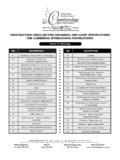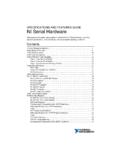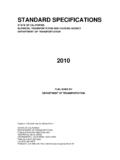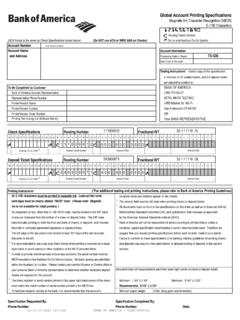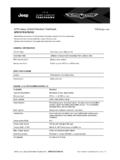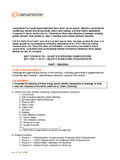Transcription of IV. SPECIFICATIONS
1 IV. SPECIFICATIONS The SPECIFICATIONS Section includes information about specific measurement requirements for equipment and for court layout (including Covered and Indoor Courts), the sanctioning of horseshoes and courts, and the allowable repairs for horseshoes. Diagrams are included here (see back cover), but for individuals or clubs that are constructing new courts, detailed plans can be found on the NHPA website at I EQUIPMENT SPECIFICATIONS SECTION A Sanctioned Horseshoes (also see diagram on the inside, back cover) All horseshoe designs and prototypes must be approved and sanctioned by the NHPA before the shoes they represent can officially be manufactured and used in NHPA sanctioned competition.
2 The maximum weight and measurement standards are as follows: The horseshoe weight shall not be more than two (2) pounds, ten (10) ounces (there is no minimum weight). No horseshoe can exceed seven and one-quarter inches (7-1/4 ) in width or seven and five-eighths inches (7-5/8 ) in length. The opening of the shoe must not exceed three and one-half inches (3-1/2 ), measured from a parallel line three-fourths of an inch ( ) inward from a straightedge touching the tips of the shoe points. (A one-eighth inch (1/8 ) tolerance to three and five-eighths inches (3-5/8 ) is allowed on used shoes) No part of any horseshoe shall exceed one inch (1 ) in height when placed, with calks down, on a level surface.
3 Shoes not meeting these requirements shall be declared illegal . Illegal shoes shall not be used in any NHPA sanctioned competition and all games pitched with illegal shoes shall be forfeited. All horseshoes used by a pitcher may be checked at any time, before or during competition, to verify that they are legal shoes. A judge or other Tournament/League Official will do this checking. (see Bylaws, Standing Rules 7 & 8 for additional information) SECTION B Altered Horseshoes Any sanctioned shoe that has been changed from its original design (calk, notch, etc.) shall be considered an altered shoe. An altered shoe is illegal and cannot be used in any sanctioned event.
4 Contestants using altered shoes in a sanctioned event shall be subject to penalties, which could include a one (1) year suspension from the NHPA (see Bylaws for additional information). Note: The NHPA Executive Council has the right to waive the altered shoe provision for a physically challenged contestant. SECTION C Legal Horseshoe Repair Through prolonged use, horseshoes may become bent or warped and mushrooming or roll-over may occur on the inside of the toe area, or elsewhere. Horseshoes may also crack or break into two or more parts. When possible, these conditions may be corrected by filing, grinding, heating, pounding, or welding of the shoes, so long as the original design of the shoe is not altered in the process and so long as they still meet all of the measurement requirements for NHPA sanctioned horseshoes.
5 (see Section A above) Section D Horseshoes Sanctioned in Other Countries Any horseshoes sanctioned in other countries may be used during NHPA sanctioned play, but only by contestants from that country, and only if the shoes meet NHPA horseshoe SPECIFICATIONS . They are not allowable for use by citizens in NHPA sanctioned events unless the horseshoes have also been sanctioned by the NHPA. (see Section A above) Section E Pitching Accessories It is legal for a contestant to carry and use a blunt-ended hook or horseshoe pick-up device, but it cannot exceed thirty-six inches (36 ) in total length. Any hook cannot protrude more than two inches (2 ) from the main shaft.
6 Care should be taken in using the hook so as not to endanger the opponent or other contestants. Contestants are also encouraged to carry measuring tools as well as a file and towel to keep their shoes burr-free and shoes/hands clean and dry. Note: All measurement tools manufactured for sale purposes must be pre-approved by the NHPA Council. II SPECIFICATIONS FOR COURT LAYOUT (also see diagram on back cover) SECTION A - Sanctioning of Courts Court conditions inconsistent with the NHPA SPECIFICATIONS listed below are discouraged, primarily because of the need to standardize the conditions and results of play for all pitchers. All NHPA sanctioned events must be contested on fully or conditionally sanctioned courts.
7 These courts must be re-sanctioned by the Charter RD (or designates) every four (4) years, beginning in 2007. 1. Full Court Sanction - Permanent, in-ground courts that meet all of the SPECIFICATIONS listed below in Section B may receive a Full Court Sanction Certificate from the Regional Director of that Charter, once these SPECIFICATIONS are verified. Any sanctioned league or tournament may be contested on these courts. The use of fully sanctioned courts is highly recommended for all Charter State Tournaments and may be required by some Charter Bylaws. 2. Conditional Court Sanction - The NHPA recognizes that while some older permanent, in-ground courts may not meet all of the court sanction SPECIFICATIONS listed below in Section B, all courts constructed before January 1, 2007 must meet the basic court requirements of: 1) correctly marked foul lines, 2) minimum pit dimensions, 3) specified stake diameter and placement, 4) specified stake height and angle/lean, 5) legal pit material of minimum depth, and 6) a protective barrier surrounding the courts.
8 These SPECIFICATIONS are detailed in Section B, below. Upon verification of these basic requirements by the Regional Director, a Conditional Court Sanction Certificate may be issued and sanctioned events can then be contested here. All clubs are encouraged to work annually on any remaining court improvements and to strive for fully-sanctioned courts. Note: All courts constructed after January 1, 2007 must meet all of the court SPECIFICATIONS listed in Section B and become fully sanctioned. In some cases, the NHPA Chairman of Regional Directors may grant a temporary court sanction waiver for specified non-basic requirements so that sanctioned league and/or tournament play can begin in a timely manner (see Court Sanction Waivers, below).
9 3. Portable Raised Pits - Portable raised pits may be sanctioned by the Regional Director so long as they meet all of the construction SPECIFICATIONS set forth in Section C (below) and also meet the six (6) basic court set-up requirements, named above and that are detailed in Section B (below). Any sanctioned event may be contested on these sanctioned portable courts. 4. Court Complexes - Since only one court sanction certificate will be issued in locations where there are multiple courts, all courts within the complex must meet the specified requirements for the issuance of a Full Court Sanction Certificate, or for the issuance of a Conditional Court Sanction Certificate.
10 5. Court Sanction Waivers - Waivers for some non-basic court requirements may be granted if approved by both the Charter Regional Director and the NHPA Chairman of Regional Directors. Note: A Conditional Court Sanction Certificate is to be issued in all cases where any waivers have been granted. a. Temporary CS Waiver - Issued for a specified and reasonable period of time; where additional time may be required for the completion of work, for example. b. Permanent CS Waiver - Issued to some indoor or older outdoor court complexes for an indefinite period of time where the current SPECIFICATIONS cannot be easily met and/or seem unreasonable to change.




